| Published
on 21
Aug
2018 |
All rights reserved.
|
|
|
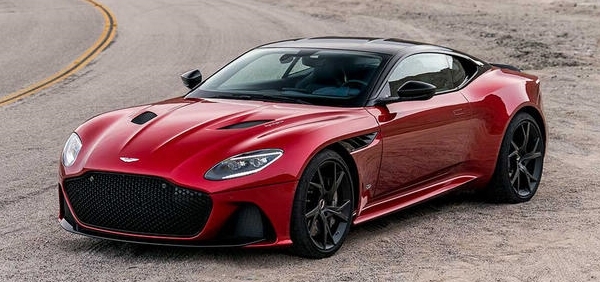
|
|
A
British luxury GT with an exotic Italian name, who doesn’t like?
|
|
Only Ferrari and Aston
Martin keep building traditional GTs powered by big V12 engines.
Ferrari is no stranger to this format, of course. Since the early
250GT-series,
it developed countless of such machines, most recently the F12 and 812
Superfast. Aston Martin arrived a lot later, in fact, in 2001 with
Vanquish. It was replaced by DBS in 2007 and then Vanquish II in
2012,
all powered by the evergreen 5.9-liter “Cologne” V12. For
performance and handling, they always trailed their Italian opponents,
but they
were never short of character or charm. Strangely, succeeding the
Vanquish II is not Vanquish III, as that name has been reserved
for the brand's forthcoming mid-engined junior supercar. Instead, Aston
revisits the DBS name for the successor of Vanquish, albeit with a
twist: DBS Superleggera.
Superleggera is the Italian word for “superlight”, which is ridiculous
for a car weighing 1770 kilograms. While its meaning is no longer
relevant, Aston found it useful for marketing. Trademarked by Italian
coachbuilder Touring of Milan (the designer of DB4) since the 1930s,
Superleggera referred to an innovative lightweight
aluminum body construction. Now it is more a historic symbol. A British
luxury GT with an exotic Italian name, who doesn’t
like?
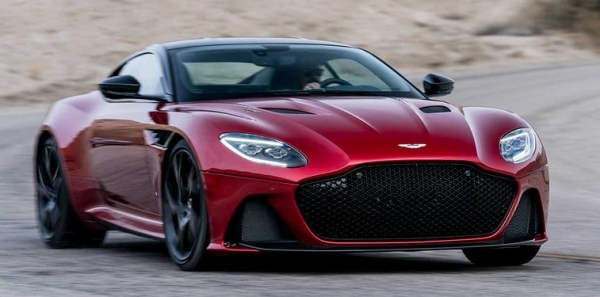
|
|
Superleggera
is the Italian word for “superlight”, which is ridiculous for a car
weighing 1770 kilograms.
|
|
Aluminum is no longer the superlight material of today, of
course, but carbon-fiber is. Therefore, 80 percent of its body panels,
including the roof, bonnet, boot lid and fenders, are made of this
exotic material. This, in addition to ceramic brakes and titanium
exhaust, resulted in a weight saving of 100 kg compared with DB11,
from which the car is derived. Yes, the DBS Superleggera is practically
a faster and wilder version of DB11. Its bonded and riveted
aluminum chassis is basically the same, including the very long 2805mm
wheelbase. The differences lie on small details: the front and rear
tracks
are widened by 10mm and 20mm, respectively. The ride height is reduced
by 5mm. The springs and adaptive dampers are retuned for sportier
response. The DB11's Bridgestone tires are replaced with stickier
Pirelli P-Zeros, and each of them get 1-inch
larger and 10mm wider. It goes without saying the
DB11's rear-mounted
transaxle layout is retained, so is the 51:49 front-to-rear weight
distribution.
Aston could have fitted it with the Vantage's active differential and
rigid-mounted rear subframe, but strangely, both ideas are shelved for
its fastest production model. Instead, it retains the DB11's mechanical
LSD, and the
rear subframe is mounted on rubber bushings whose stiffness is similar
to that of DB11 AMR. Obviously, the DBS Superleggera is not as hardcore
a driver's car as the Vantage. It wants to retain the comfort and
refinement praised by its wealthiest (and often the oldest) customers.
Make no mistake, this is a traditional high-speed GT rather than a
super sports car.
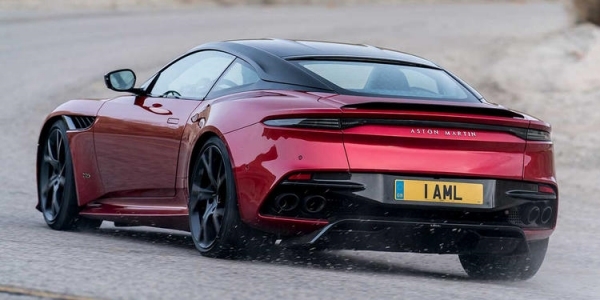
|
|
The
DBS Superleggera is practically a faster and wilder version of DB11.
|
|
The genes of DB11 are easily visible from outside, too. Both cars share
the
same low, wide and very sleek proportion. Their roof, C-pillars and
rear end design are remarkably close, too. However, the DBS is
significantly more aggressive in details, most notably a huge mesh
grille, large brake ducts and bigger vents on the bonnet. It is easily
more beautiful than Ferrari 812, and probably any other front-engined
cars on the market.
Needless to say, the 5.2-liter twin-turbo V12 is again derived from
that of DB11. Not just that, it is actually 100 percent identical in
hardware, even up to the same turbochargers. Obviously, Aston has been
artificially limiting the output of DB11, otherwise the DBS would not
have been able to lift horsepower from 639 to 725 by only tweaking the
ECU, which liberates its maximum boost pressure by a further 0.3 bar.
The same goes for
torque, which peaks at 664 lbft instead of 516, and it is still
available across a very wide band between 1800 and 5000 rpm. To handle
that extra torque, the ZF 8-speed automatic gearbox has been
upgraded from 8HP75 to 8HP95. Moreover, the final drive ratio is taller
than that of the DB11, guaranteeing stronger acceleration and keener
response.
Consequently, the DBS Superleggera is capable to do 0-60 mph in 3.3
seconds, 0-100 mph in 6.4 seconds and 0-124 mph under 9 seconds. It is
no match for Ferrari 812 Superfast, but easily quicker than the old
Vanquish, or even the One-77, especially in-gear acceleration where its
superior
mid-range torque is made to good use. The car will top out at 211 mph,
at which
point its small fixed rear spoiler, aero blades and double-diffusers
generate a downforce of 180 kg.
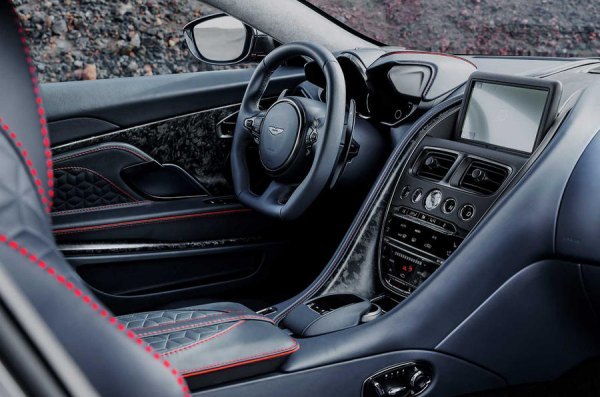
|
|
You
won’t buy an Aston for resting in its cabin. You do it for the driving
experience.
|
|
Drop into the low-mounted leather seat, you will find the
cabin familiar to that of the DB11. The roof is low and the windows are
shallow. It feels far more exotic than, say, Bentley Continental GT or
Mercedes-AMG S63 Coupe. As a result, outward visibility is precious,
and the nose and tail are completely out of sight. Guiding the DBS
Superleggera quickly on a narrow back road has to be cautious, and this
prevent you from exploiting its true performance. Just like Vanquish,
the big Aston GT is most comfortable on wide open road, flashing
through highways and travelling effortlessly across countries. You will
enjoy the leather smell of the cabin and the rich materials, although
you will enjoy even more in a Bentley or AMG. Admittedly, its
£225,000 asking price seems too high for a cabin remarkably
closed to the DB11. You might expect more bespoke design and
craftsmanship, or something more special than the Mercedes-sourced
infotainment system. The interior of Vantage might look too funky, but
it feels more special.
Anyway, you won’t buy an Aston for resting in its cabin. You do it for
the driving experience. As a traditional big GT, the DBS Superleggera
won’t disappoint. Its V12 offers endless power and torque, uncanny
smoothness and a flexibility only a big capacity engine can offer. It
pulls cleanly from low revs and spins freely towards 7000 rpm.
Overtaking is breathtaking. As soon as flooring down the throttle, the
V12 picks up almost instantly, pumping mountains of torque to the rear
wheels. As for sound, it is as good as you can get from a turbo motor.
I just heard a Ferrari F12 screaming a couple of days ago. It combines
the music of angel and the thunder of devil. Aston Martin’s twin-turbo
V12 is not as sensational as the Ferrari V12 or the old naturally
aspirated 5.9-liter, but it is still a symphony of induction and
exhaust sound. It can be melodic at cruising or thunderous when you
wind it. The new exhaust gives it a sportier edge than the DB11.
The high-torque version of ZF transaxle is not as good. We won’t expect
it to shift as instantaneous as Ferrari’s twin-clutch, which is fine
for Aston, but the fact that it struggles to smoothen the shift at
times at high rev is disappointing. However, in normal, less committed
driving, it works flawlessly.
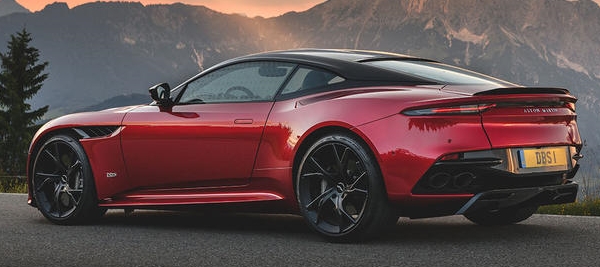
|
|
The
ride and handling works like a DB11 AMR dialed up to 120 percent.
|
|
The ride and handling works like a DB11 AMR dialed up to 120 percent.
Its steering, throttle and brake are all beautifully weighted and
tuned. The electrically assisted helm is quick without nervous,
communicative but not so as the old Vanquish. The car storms into
corner with keen turn-in, superb roadholding, stability and balance
without sacrificing ride quality, which is just a tad firmer than DB11.
It understeers very little and can be balanced with throttle.
Nevertheless, while the front end is faithful, the rear end feels too
soft – blame to partly the rubber-mounted subframe and partly the need
to aid traction to deal with its tremendous torque. This means the tail
rolls, pitch and rocks sideway too much. As a high-speed GT, this won’t
be much of a problem. As a rival to Ferrari 812 Superfast, it is just
not good enough. In fact, the Ferrari is sharper and sportier in almost
every respect, from the razor sharp throttle response, the 8900 rpm
redline, the lightning shift of its F1 gearbox, the tight body control
to the impeccable balance and amazing agility achieved with its
rear-wheel steering, side slip control and active differential, it
sounds too much for Aston. In short, the 812 Superfast is a
front-engined super sports car, whereas DBS Superleggera is merely a
very fast and beautiful GT.
Moreover, the linkage to DB11 is obvious in the driving. After the
rawer, sportier Vantage, we expected the successor of Vanquish to be
more special, not merely a beefed-up DB11. Perhaps this is why its name
starts with “DB” instead of a “V”. Don’t get me wrong, the DBS
Superleggera is a good GT, but it needs to find a character of its own,
no matter styling, engine or chassis.
|
Verdict:     |
Published
on 3
Jun 2023
|
All rights reserved.
|
|
DBS 770 Ultimate
|
|
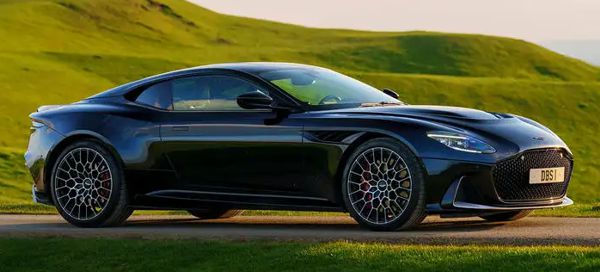
|
|
770
is not only the most powerful ever Aston GT, but also likely to be the
last hurrah of its V12 motor.
|
|
As implied by its name,
the DBS 770 Ultimate is the final edition of the DBS, and its output is
lifted to a new height of 770 horsepower – 10 more than the One-77. It
commands as much as £314,000, but production is limited to 499
cars, 199 of which are Volantes.
Normally, a final edition like this avoids engineering changes as much
as possible. Special badges, trims, colors and small cosmetic parts are
the industrial norm. Fortunately, this is not the case on the final
DBS. The Ultimate edition does get some cosmetic enhancement, such as a
new bonnet with horse-shoe shape outlet and a pair of vents right on
the top of front fenders. However, modifications underneath the skin
are very extensive, from engine, transmission, chassis to suspension
calibration. And the best news is, all these work very well to sort out
the flaws of the original car.
As the new DB12 has ditched V12, the 770 Ultimate is believed to be the
last hurrah of the “Cologne” V12, whose history could be traced back to
the DB7 Vantage in 1999. The 5.2-liter twin-turbo version on DBS
already developed a quite remarkable 725 hp, but the Ultimate version
lifts that by another 45 hp thanks to a 7 percent increase of boost
pressure and light modifications to breathing and ignition. Peak torque
remains limited by the capacity of the ZF automatic transmission to 664
pound-foot, but this time Aston Martin has its ECU revised to mimic the
linear power delivery of a bigger naturally aspirated engine. This
means, when the car is running in the first 4 gears, peak torque is not
available until 4000 rpm. Perhaps this is why Aston quotes the same
performance figures as the original DBS.
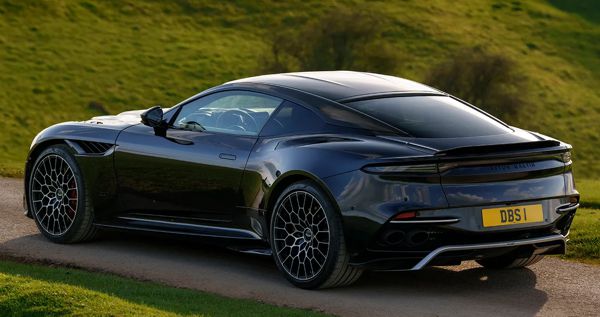
|
|
Recalibration
improves its gearshift and power delivery. Chassis mods has its
handling problem sorted. |
|
On the road, the mega V12 remains the highlight of the car. It makes
glorious noise and offers wide spread of power. On the one hand it will
pull heavily from 1500 rpm, even before turbos are spooled up, on the
other hand it will rev smoothly to 7000 rpm. Is the extra power
noticeably? Probably not, because the old one was already overflowed
with power. However, the more linear delivery at lower revs accompanied
with recalibrated traction control does make the performance easier to
access, as you are less likely to spin the rear wheels under throttle.
The new car certainly feels more friendly and polished, but it is never
tamed. If you are deliberate, it will spin the rear at any gears up to
5th !
The ZF automatic on the original DBS was another weak point. As said
previously, at high revs its gearshift was rather slow yet rough,
seemed to have trouble to cope with the tremendous torque. However,
from other applications of the ZF 8HP we know it could be better.
That’s why Aston spent extra effort to recalibrate its software.
Gearchange is now achieved both quickly and smoothly, no matter in
manual or automatic mode. It finally meets our expectation for a
flagship GT.
To make sure it had enough traction to put down the power, the old DBS
ran a very soft rear suspension which spoiled its handling. Now
benefited with reworked traction control and engine mapping, Aston can
use a stiffer suspension setup. The springs are actually unchanged, but
the adaptive dampers get stiffer. The rear chassis gets a thicker shear
panel for slightly higher rigidity. Meanwhile, the front chassis is
also reinforced with an extra cross brace, while the steering column is
now rigidly mounted.
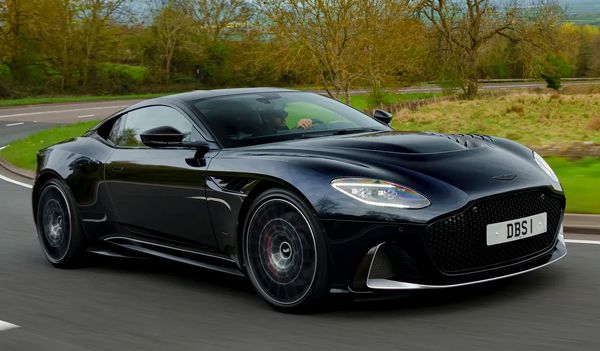
|
|
As
an exotic GT, the DBS 770 Ultimate is as good as you can get. |
|
As a result, the excessive rear end movement is gone. It feels more
planted, with tighter body control to boost confidence. The steering is
also transformed, feeling crisper and more connected to the road.
Turn-in becomes more immediate, no longer lagging slightly behind your
input.
Fortunately, the improved handling does not come at the price of ride
comfort. The big Aston remains a good GT to travel long distances. Even
at the stiffest suspension mode it is not exactly harsh. At lesser
modes it can easily do cross-country trips with remarkable comfort.
Only the outdated interior and old Mercedes-based infotainment system
may let you down.
As an exotic GT, the DBS 770 Ultimate is as good as you can get.
Ferrari 812 is sportier, unquestioanbly, but it is more a super sports
car happened in FR format. In contrast, the Aston is a true GT in
traditional sense: beautiful, powerful yet comfortable. An outdated
interior remains its biggest weakness, but when you turn back 10 or 20
years later, surrounding by electric exotics of different sizes and
shapes, you will remember only the Aston Martin's gorgeous looks, its
sonorous V12 and its unique driving experience. Who will care about the
infotainment system on a classic car?
|
Verdict:      |
|